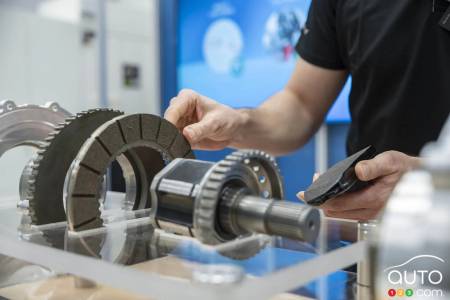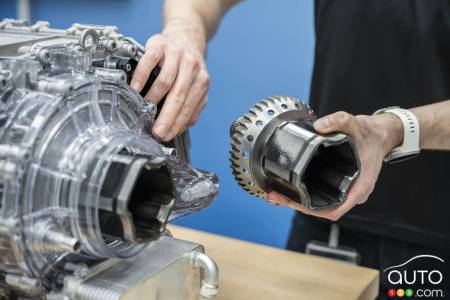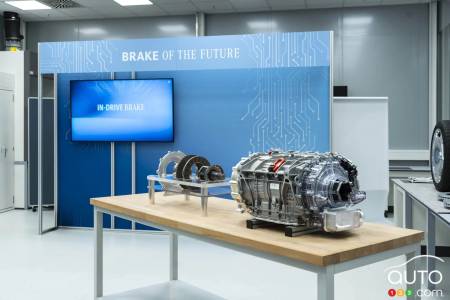• Mercedes-Benz is working on a braking system with no discs and calipers at the four wheels.
The automotive industry is evolving at a breathtaking pace, and new technologies are multiplying all the time. With electric vehicles come a host of possibilities for engineers. Recently, Mercedes-Benz engineers shared their latest innovation Motor Authority something the company touts as the “brakes of the future”.
Defying convention, these brakes would have no need for discs and calipers behind the wheels.

In-Drive
The new braking system is part of something called In-Drive technology, which moves the brakes inside a vehicle's electric motor housing. The system is still only in the testing phase, and Mercedes-Benz hasn’t confirmed any dates for production or eventual use in a mass-market vehicle.
Rest assured - the In-Drive braking system is still based on a friction system, with metal pads and discs that slow the vehicle using pressure. The difference is that the entire system is placed inside the vehicle's drive unit housing.
A disc and a pad frame the electric motor inside this metal housing. To keep everything cool, since there's no air circulation, the system is water-cooled, although engineers are still toying with different fluids and viscosities, as the unit has to dissipate a lot of heat without a radiator.
And what about wear and tear and replacement costs? These are legitimate questions that remain unanswered. Mercedes-Benz points out that with current EVs, only 2 percent of braking situations require mechanical intervention, with the remaining 98 percent is handled by regeneration systems.
In-Drive technology is in fact designed for the life of the vehicle, i.e. 15 years or 300,000 km. It could help reduce manufacturing costs - in the long term, of course.
Motor Authority points out that Mercedes-Benz has designed the system so it can be mounted in the centre of a front axle without an electric motor for single-motor, rear-wheel drive EVs. In the doing, moving the braking system to the centre of the vehicle will displace and eliminate unsprung mass, improving handling.

